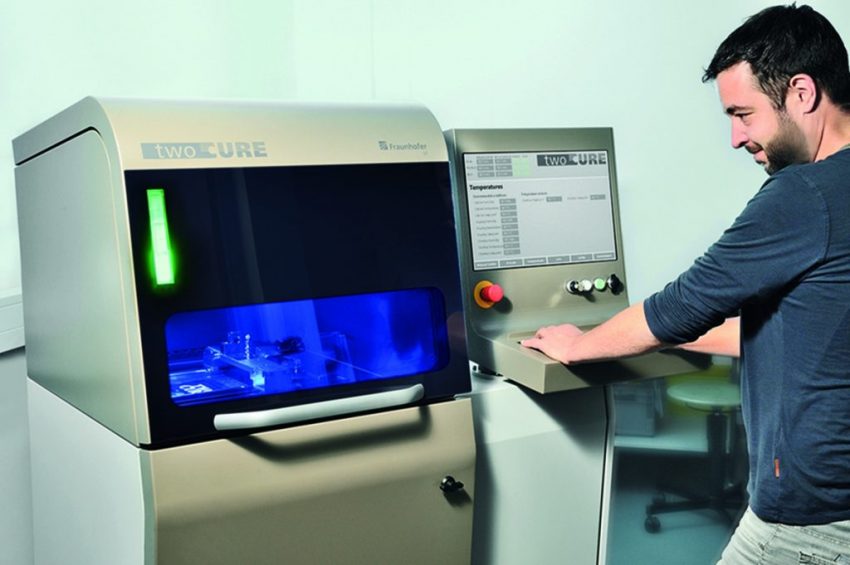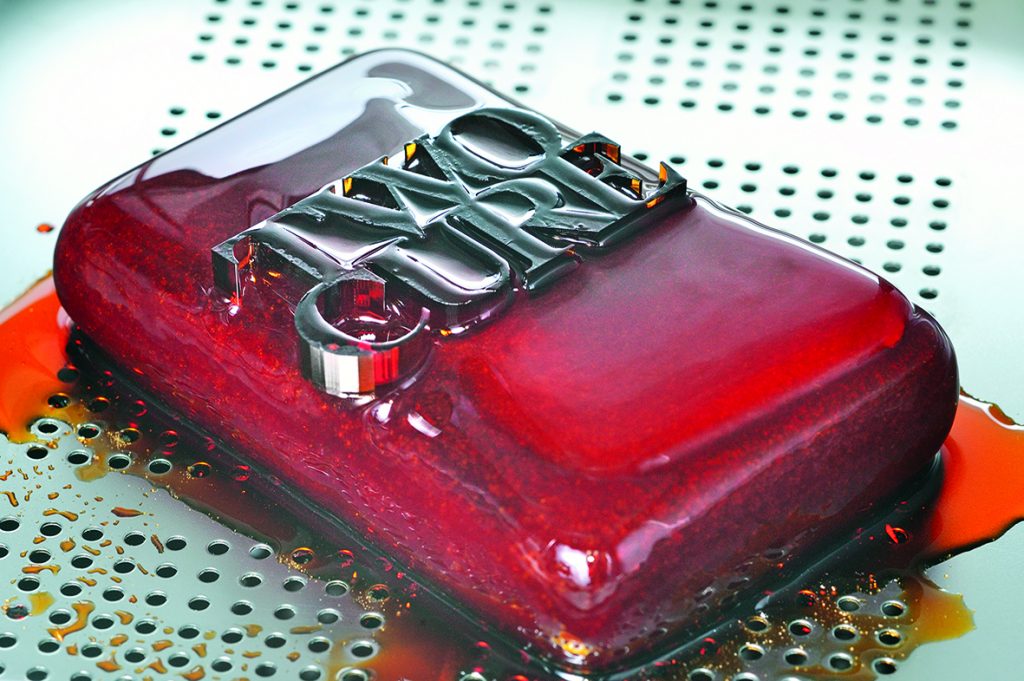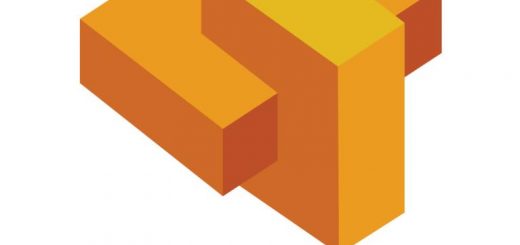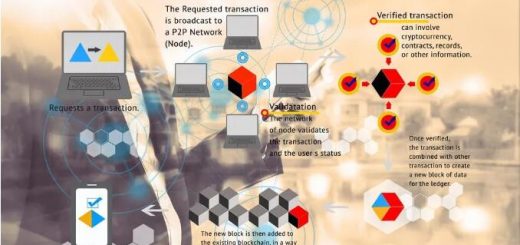“TwoCure”: the New Dimension in Resin-Based 3D Printing
The Fraunhofer Institute for Laser Technology ILT has taken its “TwoCure” process to the next level by developing it into an industry-ready machine technology. The team of scientists from Aachen, Germany will be presenting their “TwoCure” system at formnext in Frankfurt am Main from November 13 to 16. The new technique uses resin-based 3D printing to produce large numbers of plastic components without support structures in an automated process.
Sometimes systems have an inherent flaw that causes manufacturing difficulties. In the case of resin-based 3D printing, most users would immediately point to support structures as a particularly irritating problem. Supports require additional preparation in the form of CAD planning, additionally they make post-processing harder by giving users the tricky task of removing them from the product after printing. That increases the quota of manual work and generates avoidable waste. Much like stereolithography, the “TwoCure” process works using photolithographic light exposure that causes liquid resins to harden layer by layer. Supports typically play an essential role, because the plastic structures – many of which are delicate – have to be supported through contact with a platform.

![]() Free-floating Components
Free-floating Components
As part of a government-funded project, researchers from Fraunhofer ILT have now come up with an alternative: “TwoCure”, a process in which liquid resin is applied layer by layer to previously solidified resin. Based on a similar principle to a projector, a LED light unit projects the component’s layered geometry into a liquid resin bath and the polymer hardens in the areas that are illuminated. The other areas of resin solidify through cooling, leaving the cured structures floating freely without supports within the total volume. This enables the entire 3D build volume to be used for printing, rather than just the machine’s build platform.

![]() Interplay of Light and Cold
Interplay of Light and Cold
The developers from Aachen rely on a clever interplay of light and cold, curing the component chemically by means of light and solidifying the surrounding material thermally by means of cold. “The material is applied warm and then irreversibly cured by light,” says Holger Leonards, project manager “TwoCure” at Fraunhofer ILT. “At the same time the cooled machine ensures that whatever component we are creating layer by layer freezes to form a block together with the resin that has solidified like wax.” This wax-like resin can then be liquefied at room temperature, essentially draining off the support material. All that remains are the 3D printed components, which just need to be briefly cleaned and post-cured.
It was this hybrid technology that prompted the researchers to call the process “TwoCure”, and they have now created a corresponding machine that currently offers a capacity of approximately one liter and a lateral resolution of about 50 micrometers (pixel pitch). The technology is of particular interest to companies that produce numerous individual small plastic components or small batches of up to 1,000 pieces. In the future, for example, it should be possible to use this technology to produce several hundred individual pieces a day on a single machine, whether these are earmolds for hearing aids, molds for jewelry making, or small batches of plastic components. Currently, this level of throughput would require several 3D printers. “We hope that our “TwoCure” technology will pave the way for the additive production of plastic components with a single machine, eliminating the need for masses of machinery,“ says Leonards.
![]() Economical Small Batch Production
Economical Small Batch Production
As well as enabling 3D printing without supports, the new process also allows users to position components anywhere they like without requiring any platform contact. In other words, the 3D components can be built directly at any point within the build volume – and they no longer have to be supported on or connected to the platform. Because the total build volume is being used more efficiently, each 3D printing job can create significantly more parts. “Another of the machine’s benefits is that it requires very little preparatory and post-processing work,” says Leonards. “Once the 3D printing process is finished, the components are essentially ready for use because there are no supports to remove. The only steps that remain are cleaning and post-curing, both of which can easily be incorporated into an automated process chain.”
Handling is also simplified because the machine automatically ejects the frozen block into a rack so that it can move straight on to producing the next block. “Our plan is to enable users to add 3D printing jobs to a virtual queue that can then be processed around the clock in shifts that run without any human intervention,” says Leonards, explaining what lies ahead. “In the long term, that opens up the possibility of carrying out additive manufacturing on a 24/7 operation basis.”
![]() Hunt for Cooperation Partners
Hunt for Cooperation Partners
With their first production-ready machine under their belt, the researchers are now looking to refine the process. Fraunhofer ILT is currently looking for additional cooperation partners that could help the team of researchers with upcoming steps such as evaluating the process in a live production environment, adapting software and optimizing materials. Any interested parties would be well advised to contact the Fraunhofer ILT experts, for example by visiting Fraunhofer’s joint Booth E70 in Hall 3.0 at formnext, which will take place from November 13 to 16, 2018 in Frankfurt am Main.
Source:Fraunhofer




Recent Comments